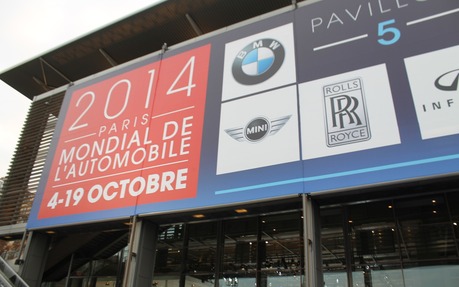The Paris Motor Show in Three (Sometimes Utopian) Acts
Since when do Europeans love utility vehicles and trucks so much? A crossover here, an X designation there—that’s what we’re witnessing at the Paris Motor Show, which has just opened its doors to the public. The other trend we’re seeing is the utopian dream of autonomous cars.
Paris, Act 1:
“My truck is bigger than yours”
It was a twist in the plot that I hadn’t seen coming. This is my first Paris Motor Show in 15 years of automobile journalism (yeah, I know, it was high time I went!), and I never thought that nearly half of the 35 vehicles on the show’s roster of world premiers would be utility vehicles.
Take, for example, the Volvo XC90. After getting piecemeal information over the past few weeks, we finally got to see the full meal deal. With its prominent (and very high) front grille, it is without a doubt the most macho touring car to represent the Swedish family in its 87 years of history.
We were also eager to see the third-generation Kia Sorento (2016), especially so that we could finally see the Korean manufacturer’s work on the passenger compartment. We checked that off our list and, indeed, the look and materials are definitely fit for a Lexus, or almost.
Then of course there’s the Fiat 500x, the third model from the Italian automaker to be offered in North America in the past three years. And it’s actually built on the Jeep Renegade’s platform, thanks to the Chrysler-Fiat marriage. This relationship will become more official in a few days when it makes its entrance on the New York stock exchange.
And while we’re talking trucks, we should also mention:
-The Porsche Cayenne S E-Hybrid: It’s essentially a plug-in
-The Suzuki Vitara: No, don’t even think about it, even though it looks a lot nicer than it did in North America
-The Land Rover Discovery Sport: First introduced plowing through the Seine River (no joke!)
-The Renault Espace: An MPV whose name (French for “space”) says it all
Paris, Act 2
Bring out the cars!
With so many SUVs, crossovers and other vehicles with high ground clearance being featured at the Paris show, you’re probably wondering “What about the cars?”
Good question. There are definitely cars on display, but most of them won’t help ease our dependency on gas. Take for example:
The Mercedes-Benz AMG: Both the magnificent AMG-GT and the C63 AMG, in sedan or shooting-brake form. (Um, did we mention that they’re truly magnificent?)
The Nissan Pulsar Nismo Concept: Unveiled alongside the production model (a decision that was both obvious and intelligent).
The Ferrari 458 Speciale Aperta: As the convertible version of the sports car with the same name, this is Ferrari’s fastest convertible in history. With 597 horsepower, it flies up to 100 km/hr in just three seconds.
And, surprise! The Volkswagen XL Sport popped up at the kiosk run by Europe’s biggest automaker, which incidentally takes up all of Pavilion 4. Derived from the frugal Volkswagen XL 1 (which can take you from Toronto to Cambridge on just $1.35 of gas), this prototype replaces the hybrid engine with one from the Ducati 1199 Superleggera (as in “super-light) motorcycle. It’s a V-twin (two-cylinder) that produces 197 horsepower and it can take the vehicle from 0 to 100 kilometres per hour in less than six seconds.
Paris, Act 3
Dreams of Autonomous Driving
While the last decade seems to have been dedicated to technological advancements promoting austerity (a very popular word on this side of the pond), the next decade will focus more on autonomous driving. Every second kiosk seems to boast revolutionary safety technology, with a self-driving model being developed.
Promises, promises…
Carlos Ghosn, the colorful leader of Nissan/Renault, made the boldest statement thus far. “The next step in mobility is autonomous driving,” he said. “Today I’m making a promise that by 2016, we’ll all be able to let our Nissan drive itself through congested traffic. It will even be able to park itself. And by 2018, vehicles will be able to drive themselves down the highway, regardless of whether they are congested or not.”
But the man who once claimed that the Nissan Leaf would be so popular that it would need its own manufacturing plant also added, “But all of this is if, and only if, you choose to make it happen.” And it’s true that the battle is far from won. People still seem to have their doubts.
As an article in France’s Le Monde newspaper explained, since 1970, the automobile industry’s road has been peppered with technological pitfalls, economic downturns, safety mishaps and challenging legislative restrictions. To which they raised the logical question: “Who will pay in case of an accident? The manufacturer, the parts maker, the software developer, the insurer or the driver?”
It’s a question that almost answers itself.
